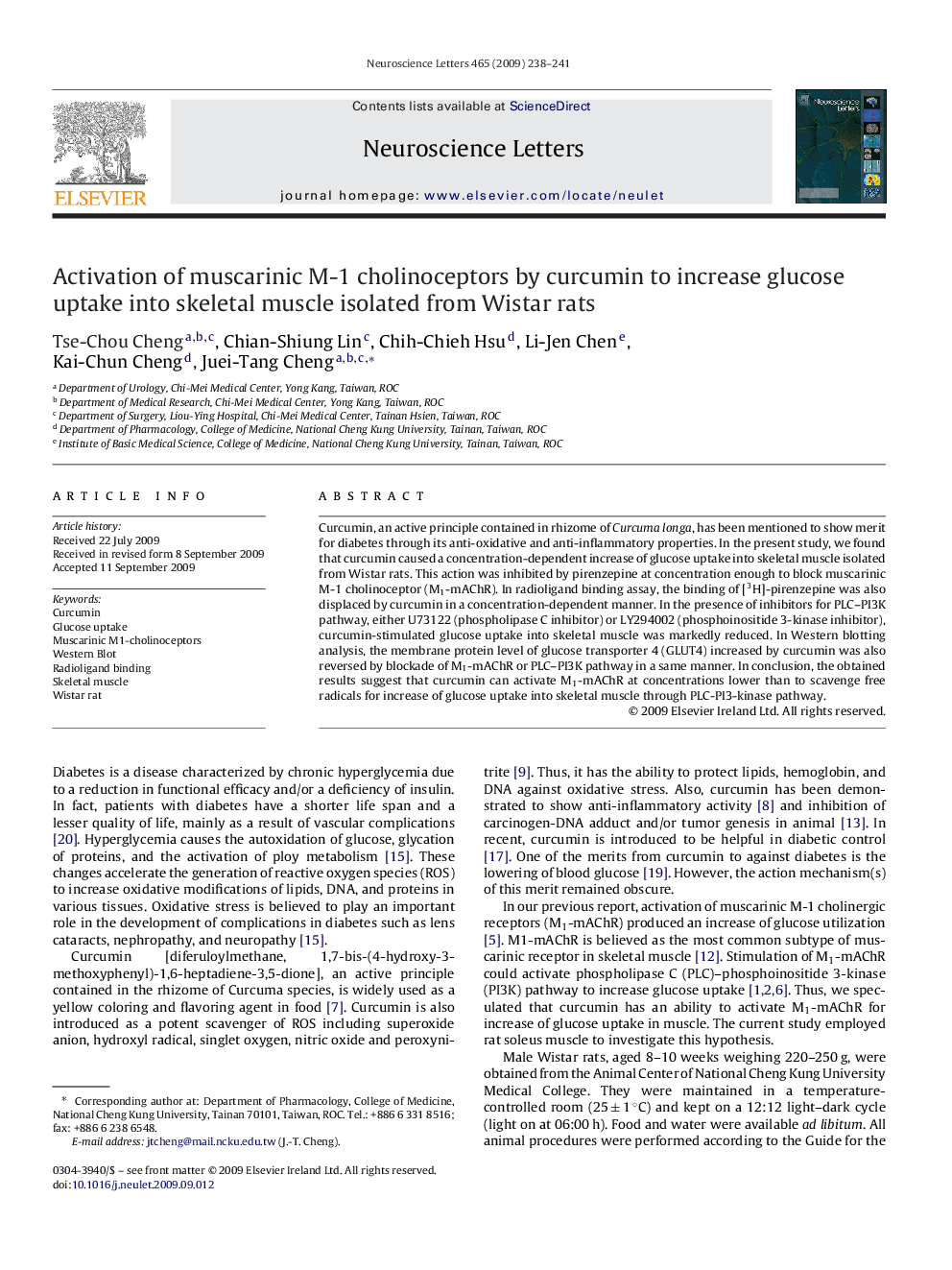| Article ID | Journal | Published Year | Pages | File Type |
|---|---|---|---|---|
| 4347334 | Neuroscience Letters | 2009 | 4 Pages |
Curcumin, an active principle contained in rhizome of Curcuma longa, has been mentioned to show merit for diabetes through its anti-oxidative and anti-inflammatory properties. In the present study, we found that curcumin caused a concentration-dependent increase of glucose uptake into skeletal muscle isolated from Wistar rats. This action was inhibited by pirenzepine at concentration enough to block muscarinic M-1 cholinoceptor (M1-mAChR). In radioligand binding assay, the binding of [3H]-pirenzepine was also displaced by curcumin in a concentration-dependent manner. In the presence of inhibitors for PLC–PI3K pathway, either U73122 (phospholipase C inhibitor) or LY294002 (phosphoinositide 3-kinase inhibitor), curcumin-stimulated glucose uptake into skeletal muscle was markedly reduced. In Western blotting analysis, the membrane protein level of glucose transporter 4 (GLUT4) increased by curcumin was also reversed by blockade of M1-mAChR or PLC–PI3K pathway in a same manner. In conclusion, the obtained results suggest that curcumin can activate M1-mAChR at concentrations lower than to scavenge free radicals for increase of glucose uptake into skeletal muscle through PLC-PI3-kinase pathway.
